The Music Makers
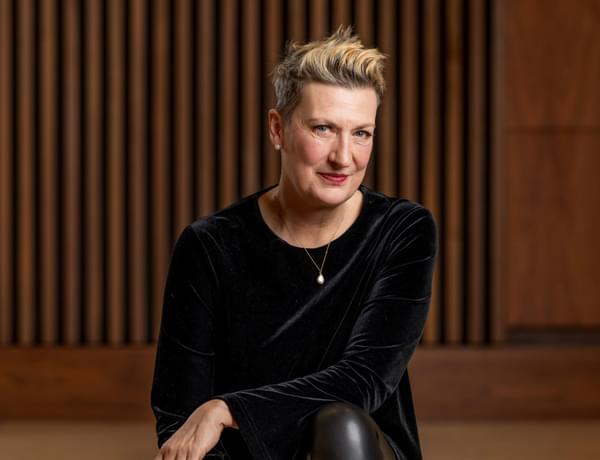
Full programme
- Judith Weir, Music, Untangled (7mins)
- Nico Muhly, Friday Afternoons (UK Premiere) (18mins)
- Britten, The Young Person’s Guide to the Orchestra (16mins)
- Elgar, The Music Makers (38mins)
Performers
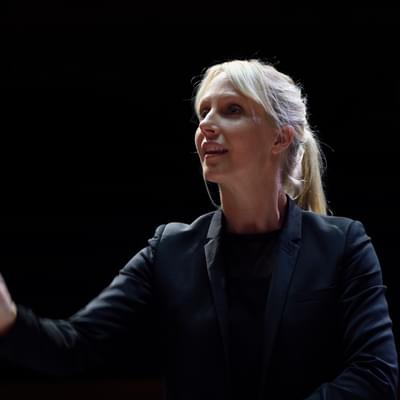
Sofi Jeannin
Conductor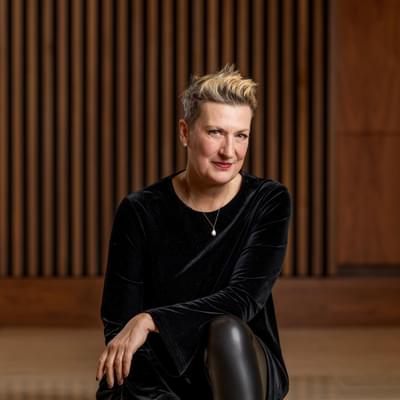
Dame Sarah Connolly
Mezzo Soprano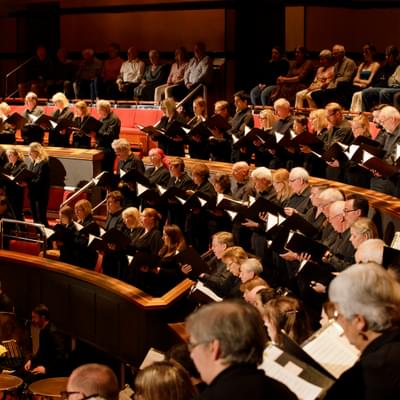
CBSO Chorus
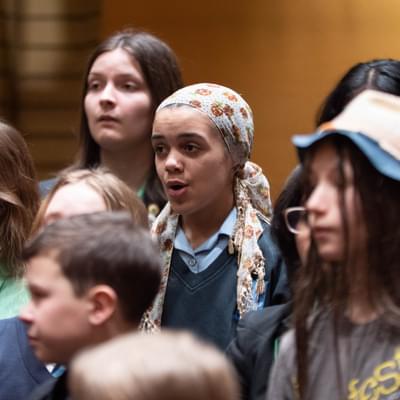
CBSO Youth Chorus
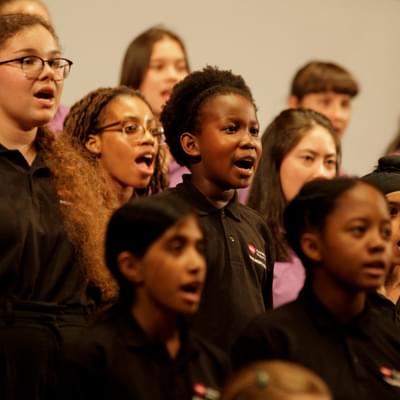
CBSO Children's Chorus
Introduction
The Music Makers has been part of my life ever since my father played me the London Philharmonic Orchestra recording with Sir Adrian Boult and Dame Janet Baker.
He explained to me the meaning of the final words, namely that musicians have a special portal through which we can wander and realise our dreams.
When I left the BBC Singers in 1992 literally nobody would hire me as an ex-chorister. I used to choose repertoire I loved rather than the expected, and the 'Nimrod' theme from The Music Makers caught the attention of John Berry, English National Opera's new artistic director and the rest is history!
Having sung the 'Angel' all my life, I’m continually struck by the surety of Cardinal Newman’s journey and faith, and Elgar’s magnificent setting. In Music Makers Elgar expresses his loss of faith and the bereft sadness that brings, which I totally understand.
What a privilege it is to sing this music and with the marvellous CBSO in Birmingham, the city of its premier in 1912.
Dame Sarah Connolly
Mezzo Soprano
Programme notes
Led by Sofi Jeannin, the CBSO, CBSO choruses and Dame Sarah Connolly perform a superb programme of music - that’s all about the people who make it. Weir’s Music, Untangled draws on Scottish folk-song, while Muhly’s Friday Afternoons, following Britten’s example, is inventively written for children. Britten’s famous Young Person’s Guide tours the orchestra; while Elgar quotes his famous ‘Nimrod’ in Music Makers.
Music, Untangled
Judith Weir (b.1954)
Judith Weir is a good friend of the CBSO and its choruses. In the 1990s, long before she became Master of the Queen’s Music (a post that she held until this year), she was the CBSO’s Composer in Association. She took a special interest in our family of singers, composing two of her best-loved choral works, Storm and We Are Shadows, specially for the CBSO’s youth choruses. Music Untangled, though, has a different story – and for a composer with Weir’s lifelong love of Scottish folk art (and quiet sense of humour), the opportunity in 1991 to write a piece for Tanglewood Music Centre, near Boston, prompted thoughts of very different threads (and tangles). As she explains:
"The music was inspired by a short extract from a traditional melody sung by women cloth-workers in Barra, in the Western Isles of Scotland. It is first presented in a broad sweep of sound, featuring many opposing sections of the orchestra, but finally focuses down to a single strand of melody."
Friday Afternoons
Nico Muhly (b.1981)
Back in 2013, when the musical world celebrated the 100th birthday of Benjamin Britten, Aldeburgh Music had the idea of picking up his famous series of children’s songs, Friday Afternoons, and commissioning some more. Nico Muhly rose to the challenge in 2015 – and in 2019 he adapted them for orchestra, with Simon Halsey conducting the world premiere in Berlin. In Muhly’s own words:
"Friday Afternoons was originally a set of songs for young voices and piano, here orchestrated. It was commissioned by Aldeburgh Music as a companion piece to Benjamin Britten’s cycle by the same name (1933-1935). In my response, I tried to pay homage to Britten’s virtuosity in setting text for children’s voices: the melodies are simple, but the harmonies underneath them (and, indeed, the subtle harmonic dissonances the melodies themselves imply) can be strange and shift unexpectedly."
"A few of the songs use actual folk melodies, and others are my imitations. The fast song, The Rain, is a direct homage to Britten’s This Little Babe, from A Ceremony of Carols, and was designed to be as exciting to sing as it was for me to sing Britten’s music as a young boy. All of the songs, whether exuberant or meditative, have a barely visible underpinning of the inevitability of ageing, a bittersweet emotion which most children begin to experience in their early teens. The songs conclude with a setting of Mark Twain’s Warm Summer Sun, which is both peaceful and, in a way, a morbid lullaby. The cycle lasts just under 18 minutes."
The Young Person’s Guide to the Orchestra
Benjamin Britten (1913-1976)
"I never really worried that it was too sophisticated for kids" wrote Benjamin Britten in 1946, describing his newly-completed Young Person’s Guide to the Orchestra. "It is difficult to be that for the little blighters!" It had begun life in 1945 as a film score – a commission from the Crown Film Unit for an educational documentary called Instruments of the Orchestra. The conductor Sir Malcolm Sargent was seen walking up to conduct the London Symphony Orchestra. "Many of you have heard and seen a full symphony orchestra playing in the concert hall" he began. "But today I want to take this great musical box to pieces…"
And so the music started, with a narration written by Britten himself. The piece the orchestra plays was originally called Variations and Fugue on a Theme of Purcell, and Britten’s idea was to take a striking melody – a Rondeau from Purcell’s 1695 music for Aphra Behn’s play Abdelazer – and compose a variation upon it for each section of the orchestra in turn, before “reassembling” the orchestra in a brilliant final fugue. “I’m hoping that {the piece] may be useful for the ordinary orchestra repertoire, but I’m not sure yet”, Britten commented after finishing the score, on New Year’s Eve 1945. That proved to be something of an understatement.
Purcell’s majestic theme strides out on full orchestra, then appears five more times: on woodwinds, on brass, on strings, on percussion, and them once again on full orchestra before the variations begin – thirteen in total, one for each instrument of the orchestra, and perfectly tailored to demonstrate that instrument’s character and range, from brilliant flutes through singing cellos, swirling harp and echoing horns to thunderous percussion. And then, Britten reassembles the orchestra in the same order - piccolo to percussion - in a dazzling, fast-moving fugue, before Purcell’s great tune sweeps back in, grander than ever, to crown the whole piece with a huge, exuberant shout of joy.
The Music Makers, Op.69
Edward Elgar (1857-1934)
For the four days of the October 1912 Triennial Festival, Birmingham was the centre of the musical universe. Henry Wood conducted; Sibelius, Delius and Granville Bantock were all in attendance and the soloists included Pablo Casals and the Finnish soprano Aino Ackté – astonishing the Birmingham public with an extract from Richard Strauss’s outrageous, ultra-modern Salomé. Philip Heseltine (aka Peter Warlock), Dora Penny (the “Dorabella” of the Enigma Variations) and the future philosopher Ludwig Wittgenstein were among the thousands who crammed into Birmingham Town Hall to hear this “gargantuan feast of music”.
And in pride of place on the first night, 1st October 1912 – between a Liszt piano concerto and the UK premiere of Sibelius’s Fourth Symphony – came a new work from local hero Sir Edward Elgar. The Music Makers was the fourth of Elgar’s Triennial Festival commissions, following The Dream of Gerontius (1900), The Apostles (1903) and The Kingdom (1906), and it would be his last – just as (though no-one on in Victoria Square that night realised it) this would be the last ever Triennial Festival.
Perhaps on some level, Elgar sensed this. The Music Makers is unique among Elgar’s works; just as the central figure of Arthur O’Shaughnessy’s Ode, of 1873 – the eternal figure of the artist as visionary and outsider – stands alone. In O’Shaughnessy’s verses, the unsettled and increasingly melancholy composer found the perfect framework for a choral work that is about nothing less than the act of artistic creation itself. As he put it:
"In interpreting O'Shaughnessy's Ode, I have felt that his 'music makers' must include not only poets and singers but all artists who feel the tremendous responsibility of their mission to 'renew the world as of yore'."
"As I have felt, so I have insisted on this responsibility, therefore the atmosphere of the music is mainly sad; but there are moments of enthusiasm, and bursts of joy occasionally approaching frenzy; moods which the creative artist suffers in creating or in contemplation of the unending influence of his creation."
"Yes, suffers: - this is the only word I dare to use; for even the highest ecstasy of 'making' is mixed with the consciousness of the sombre dignity of the eternity of the artist's responsibility."
For the rest, Elgar asks only that we let the words and music move us, and allow ourselves to feel as he felt in creating a choral work that – like the man himself - is anxious, inspiring, impulsive, dreamy, sardonic and entirely individual. Elgar fans will recognise self-quotations from Enigma, Gerontius, the Violin Concerto, the First Symphony, The Apostles and Sea Pictures. But really, no map or explanation is required to explore this most candid (and poignant) of Elgar’s public statements. This is Elgar explaining himself without inhibition. He never wrote anything more personal.
© Richard Bratby
Featured image © Andrew Crowley